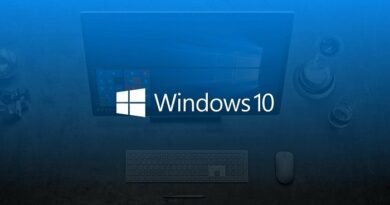3 Methods for Recovering Deleted Files from USB Drives
Table of Contents
Accidents happen, and losing crucial data from your USB drive can be a nightmare. The panic is real whether it’s due to unplugging during transfer, accidental deletion, malware, or hardware issues. In this comprehensive guide, we delve into the common causes of USB data loss and provide detailed steps to recover deleted files effectively.
Understanding USB Data Loss
USB drives are prone to data loss for various reasons, such as:
- Unplugging During Transfer: Interrupting data transfer can lead to file corruption or loss.
- Accidental Deletion: Human errors happen, and files may be deleted unintentionally.
- Malware Infection: Viruses can infect USB drives, causing data loss or corruption.
- Formatted USB Drive: Formatting erases all data on the drive, leading to loss.
- Physical Damage: Damaged USB drives may result in inaccessible or lost data.
- Hardware Failure: Malfunctions in the USB drive’s hardware can lead to data loss.
- Software Bug: Glitches in the operating system or file system may cause data disappearance.
- Power Supply Issues: Insufficient or unstable power supply to USB ports can contribute to data loss.
Regardless of the cause, prompt action is crucial for successful USB data recovery.
Recovery Methods
Method 1: Restore Previous Versions Feature
The Restore Previous Versions feature, available in recent Windows versions, offers a native solution to recover deleted files without third-party tools. Follow these steps:
- Connect the USB flash drive to your computer.
- Open the Start menu, type “This PC,” and hit Enter.
- Right-click on your USB drive, and select “Properties.”
- Navigate to the “Previous Versions” tab and choose a suitable recovery option.
- Click “Restore” to recover your deleted files.

If this method isn’t applicable, proceed to the next option.
Method 2: Windows File Recovery Build-in Tool
Microsoft introduced its data recovery application, Windows File Recovery, for Windows 10 version 2004 and higher. Though lacking a graphical interface, it’s effective. Follow these steps:
- Download Windows File Recovery from the Microsoft Store.

- Connect your USB flash drive and note the assigned drive letter.
- Open Windows Terminal or CMD as an administrator.
- Enter the command:
Winfr E: C: /extensive(replace E: with your USB drive’s letter and C: with the storage device’s letter).

- Wait for the recovery process to complete.
Method 3: Recover Deleted Files Using CMD
Utilize the built-in Command Prompt (CMD) without third-party tools:
- Connect the USB flash drive to your computer.
- Open the Start menu, type “cmd,” and hit Enter.
- Type
chkdsk X: /fPress Enter in the Command Prompt (replace X with your USB drive’s letter).

- Enter
ATTRIB -H -R -S /S /D X:*.*(replace X with your USB drive’s letter) and press Enter. - Wait for the process to finish, and you should find the recovered files in a new folder on your USB drive.
By following these methods, you increase the chances of successful USB data recovery, ensuring your valuable files are restored.
What are the common reasons for data loss on USB drives?
Data loss on USB drives can occur due to unplugging during transfer, accidental deletion, malware infection, formatting, physical damage, hardware failure, software bugs, and power supply issues.
How can I recover deleted files using the “Restore Previous Versions” feature on Windows?
Connect your USB drive, go to “This PC,” right-click on the USB drive, select “Properties,” navigate to the “Previous Versions” tab, choose a suitable recovery option, and click “Restore.”
Is there a native tool for USB data recovery on Windows?
Yes, Microsoft provides the Windows File Recovery tool, available for Windows 10 version 2004 and higher. Download it from the Microsoft Store, connect your USB drive, use the command line, and wait for the recovery process to finish.
How can I recover deleted files from a USB drive using Command Prompt (CMD)?
Connect the USB drive, open CMD, type “chkdsk X: /f” (replace X with the drive letter), press Enter, then type “ATTRIB -H -R -S /S /D X:.” (replace X with the drive letter), and wait for the process to complete.
What’s the importance of immediate action when facing USB data loss?
It is crucial to stop using the USB drive, disconnect it from the computer, and store it safely until you’re ready to start the recovery process. Avoid attempting to copy data to prevent further complications.
In conclusion
Understanding and addressing USB data loss is paramount in safeguarding valuable information. This comprehensive guide has outlined common reasons for data loss, ranging from unplugging during transfer to malware infections. To ensure successful USB data recovery, immediate action is crucial—stop using the drive, disconnect it, and refrain from attempting data copy. The guide details three effective recovery methods: utilizing the “Restore Previous Versions” feature, employing Microsoft’s Windows File Recovery tool, and leveraging Command Prompt (CMD). Whether you’re familiar with native Windows tools or prefer a third-party application, these methods provide reliable steps to retrieve deleted files from USB drives. Following these strategies enhances your ability to navigate and conquer the challenges of USB data loss effectively.


